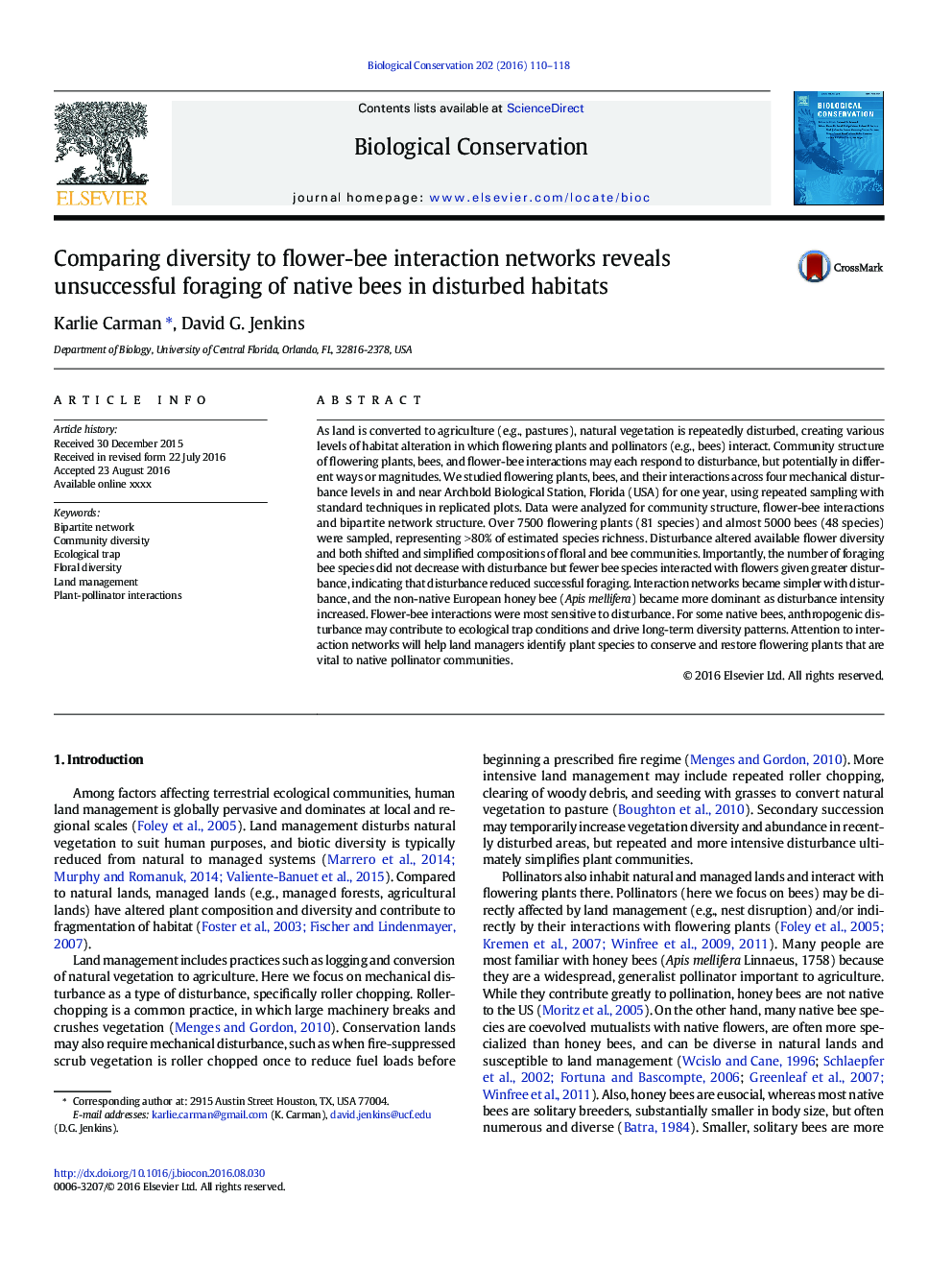| کد مقاله | کد نشریه | سال انتشار | مقاله انگلیسی | نسخه تمام متن |
|---|---|---|---|---|
| 6298137 | 1617899 | 2016 | 9 صفحه PDF | دانلود رایگان |
عنوان انگلیسی مقاله ISI
Comparing diversity to flower-bee interaction networks reveals unsuccessful foraging of native bees in disturbed habitats
ترجمه فارسی عنوان
مقایسه تنوع در شبکه های متقابل گل های زنبور عسل نشان می دهد که خوردن نامناسب زنبورهای بومی در زیستگاه های متداول
دانلود مقاله + سفارش ترجمه
دانلود مقاله ISI انگلیسی
رایگان برای ایرانیان
کلمات کلیدی
شبکه دو طرفه، تنوع جامعه، تله اکولوژیکی، تنوع گل، مدیریت زمین، تعامل گیاه گرده افشان،
موضوعات مرتبط
علوم زیستی و بیوفناوری
علوم کشاورزی و بیولوژیک
بوم شناسی، تکامل، رفتار و سامانه شناسی
چکیده انگلیسی
As land is converted to agriculture (e.g., pastures), natural vegetation is repeatedly disturbed, creating various levels of habitat alteration in which flowering plants and pollinators (e.g., bees) interact. Community structure of flowering plants, bees, and flower-bee interactions may each respond to disturbance, but potentially in different ways or magnitudes. We studied flowering plants, bees, and their interactions across four mechanical disturbance levels in and near Archbold Biological Station, Florida (USA) for one year, using repeated sampling with standard techniques in replicated plots. Data were analyzed for community structure, flower-bee interactions and bipartite network structure. Over 7500 flowering plants (81 species) and almost 5000 bees (48 species) were sampled, representing >Â 80% of estimated species richness. Disturbance altered available flower diversity and both shifted and simplified compositions of floral and bee communities. Importantly, the number of foraging bee species did not decrease with disturbance but fewer bee species interacted with flowers given greater disturbance, indicating that disturbance reduced successful foraging. Interaction networks became simpler with disturbance, and the non-native European honey bee (Apis mellifera) became more dominant as disturbance intensity increased. Flower-bee interactions were most sensitive to disturbance. For some native bees, anthropogenic disturbance may contribute to ecological trap conditions and drive long-term diversity patterns. Attention to interaction networks will help land managers identify plant species to conserve and restore flowering plants that are vital to native pollinator communities.
ناشر
Database: Elsevier - ScienceDirect (ساینس دایرکت)
Journal: Biological Conservation - Volume 202, October 2016, Pages 110-118
Journal: Biological Conservation - Volume 202, October 2016, Pages 110-118
نویسندگان
Karlie Carman, David G. Jenkins,
